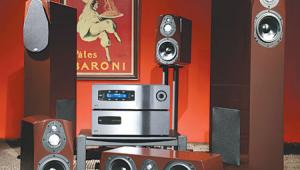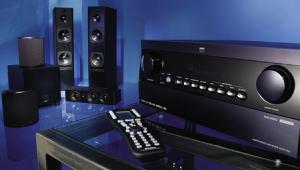I bought these speakers in early 2k, purchased at Best Buy, for around 50 bucks. They have 4" poly woofer, 2" cone poly mid and a 5/8" piezo mylar dome, with an all aluminum case and grill w/plastic capped binding posts, also non-ported design. The reason for the long explaination, didn't think they were still available, found online for six bucks!? These have been great speakers when you consider they're tiny size,and price. Still use them every summer, they are definitely waterproof, made the mistake of leaving them out all winter, still sounded great in the spring! We eventually bought three more pairs. I have tried them both ways, v. or h., liked verticle the best. I'm sure they are not aluminum anymore but at this price I could afford several pairs as long as they sound good, as you can tell I really like these. They are small enough to hide and still preform. Though, I will ask, are 70v systems expensive to put together, know what it is, just have no experience. Have really large yard, am considering the different options.
Speakers AlFresco Boston Acoustics Voyager Metro II
Price: $400 each At A Glance: Two channels from one enclosure • Fully weatherproof • Detailed top end
The Boston Acoustics Voyager Metro II is the only speaker in this review to output both channels from a single enclosure.
This outdoor speaker is billed as both weather-resistant and weatherproof (unlike Boston’s SoundWare satellites, which are only resistant). Notes Shenefield: “The truly weatherproof models, by our standards, use aluminum, stainless steel, UV-resistant plastics, powdercoating, etc.” Boston’s weatherproof speakers, including the Voyager, can be used in the open, making under-eave or covered-deck installation optional.
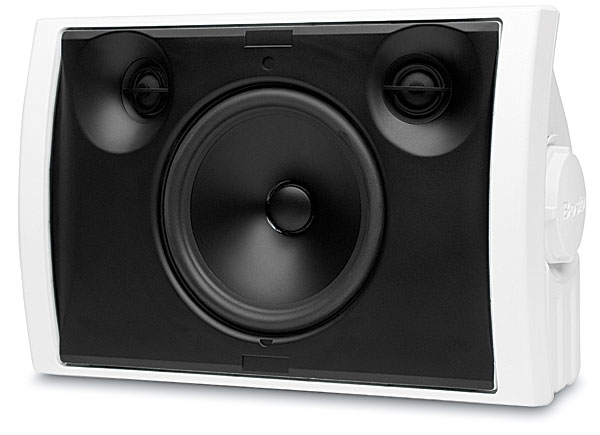
The Voyager’s polypropylene enclosure is waterproof, impact-resistant, and impervious to the sun’s merciless UV rays. Acoustic parts are sealed and gasketed and all parts are designed to tolerate extreme temperatures. The manual says the speakers can withstand sun, rain, snow, heat, or cold. Unlike many other outdoor speakers, they are designed for marine use, which requires resistance to salt. While Boston does not provide a temperature range as the other two manufacturers here do, the company says these speakers can thrive pretty much anywhere, from Montreal to Phoenix. Ben & Jerry’s bought some for use in its ice cream freezers.
The Voyager Metro II doesn’t look much different than the more conventional models in the Boston outdoor speaker line. Its enclosure is roughly the same shape as the other two models reviewed here, albeit slightly larger. But this one-piece stereo speaker is designed to be used horizontally, not vertically, as the position of the badge indicates. Behind its grille there are not one, but two soft-dome tweeters spaced several inches apart. The single 6.5-inch woofer has dual voice coils, enabling it to accept input from both left and right channels. On the back are dual sets of binding posts—not for biwiring or biamping, but to feed two separate channels into the speaker. Boston also builds dual tweeters and dual woofer coils into its rock-shaped Voyager RK8T2 and TK6T2 speakers.
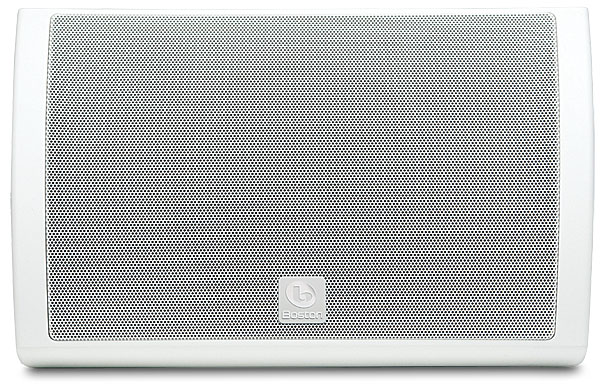
Because this speaker is designed to be installed horizontally, with the two tweeters above the single woofer, the C-mount bracket will tilt it up or down, not side to side (when the badge is in its proper place at bottom). Its plastic finish is smoother than the matte finish of the other speakers reviewed. The “grippy knobs,” as the manufacturer calls them, have protrusions to make them easier to grab, so tilting the speaker within its bracket is a breeze. The bracket has five perforations. From the top, they include: half-inch horizontal oblong, T-shaped keyhole, 1-inch vertical oblong in center, T-shaped keyhole, and half-inch vertical oblong at bottom. This is the only model reviewed without the added mounting option of a threaded insert. That means you’ll be limited to the range of adjustment afforded by the supplied bracket.
The Voyager’s dual-voicecoil configuration is hardly unique among outdoor speakers. Most manufacturers offer models intended to reproduce both stereo channels from a single enclosure for situations where a stereo pair is impractical or undesirable. The trade-off is that, with the tweeters so close together, and both channels served by a single woofer, the Voyager and its brethren don’t offer much stereo separation. To hear any distinctions between the left and right channels—for example, the spread between dueling guitars of Duane Allman and Eric Clapton in Derek & the Dominoes’ “Key to the Highway” from Layla—I had to stand near enough to touch the speaker. Once I stepped back, the effect was functionally mono. You’ll hear stereo separation only if you plop your deck chair right in front of the speaker.
But there is a benefit to this approach: No matter where folks are standing (or sitting or swimming), everyone gets an equal shot at hearing both channels, with neither one emphasized. Sacrificing stereo separation for even coverage is a valid way to spread music through an unstructured outdoor space, especially during social occasions when people are milling around. The Voyager releases outdoor listeners from the tyranny of the sweet spot and the annoyance of stereo listening with one channel dominant.
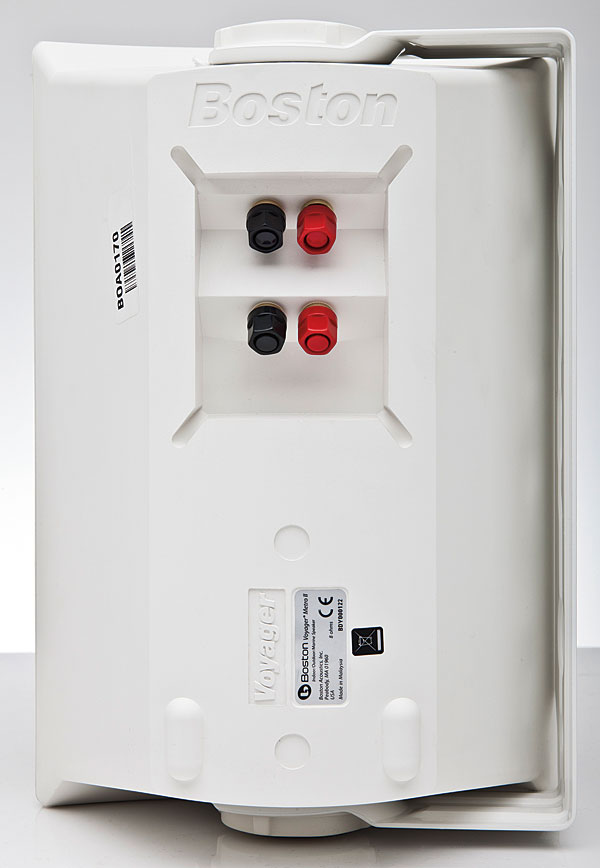
Despite its lack of horizontal soundstaging, this speaker can provide decent imaging within its near-mono output—if you define an image as a sonic element palpably reproduced within a discernible space, however narrow that space might be. In one of my few mono test tracks, Thelonious Monk’s “Pannonica” (Brilliant Corners), the Voyager imaged the saxes, piano, and celesta as well as any of the hundreds of speakers on which I’ve heard the track played, while bringing up the string bass more than I’m used to (not a bad thing). It also allowed Billie Holiday to step a few inches forward of her brash horn and reed sections in “Gimme a Pigfoot” (From the Original Decca Masters) also recorded in mono. It had a more detailed top end than the other two speakers reviewed, conjuring a little extra texture from Richard Thompson’s voice and acoustic guitar in “King of Bohemia” (Mirror Blue).
This speaker carries a five-year warranty. In a nice touch, it comes with a Certificate of Conformity that lists three signatures, including that of the test engineer.
Specs
Type: Two-way, outdoor, single-enclosure stereo
Tweeter (size in inches, type): 1, Kortec soft dome (2)
Woofer (size in inches, type): 6.5, graphite-injected copolymer (1), dual voice coils
Nominal Impedance (ohms): 8
Recommended Amp Power (watts): 10-125
Available Finishes:
White or black polypropylene
Dimensions (W x H x D, inches):
13 x 9 x 7.75
Weight (pounds): 9.7
Price: $400/each
Company Info
Boston Acoustics
(201) 762-6429
bostonacoustics.com
HT Labs Measures
Sensitivity: 88 dB from 500 Hz to 2 kHz
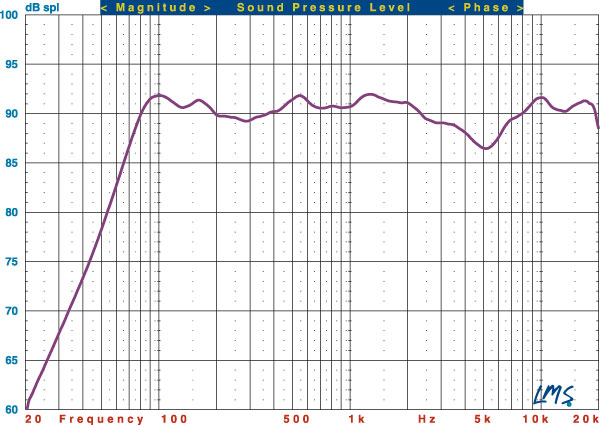
This graph shows the quasi-anechoic (employing close-miking of the woofer) frequency response of the Metro II outdoor speaker (purple trace). The passive loudspeaker was measured with the grille at a distance of 1 meter with a 2.83-volt input.
The Metro II’s listening-window response with both sections connected in parallel (a five-point average of axial and +/–15-degree horizontal and vertical responses) measures +1.88/–3.62 decibels from 200 hertz to 10 kilohertz. An average of axial and +/–15-degree horizontal responses measures +2.21/–4.56 dB from 200 Hz to 10 kHz. The –3dB point is at 71 Hz, and the –6dB point is at 63 Hz. Impedance of each section separately reaches a minimum of 4.37 ohms at 172 Hz and a phase angle of –43.74 degrees at 96 Hz. —MJP
- Log in or register to post comments


